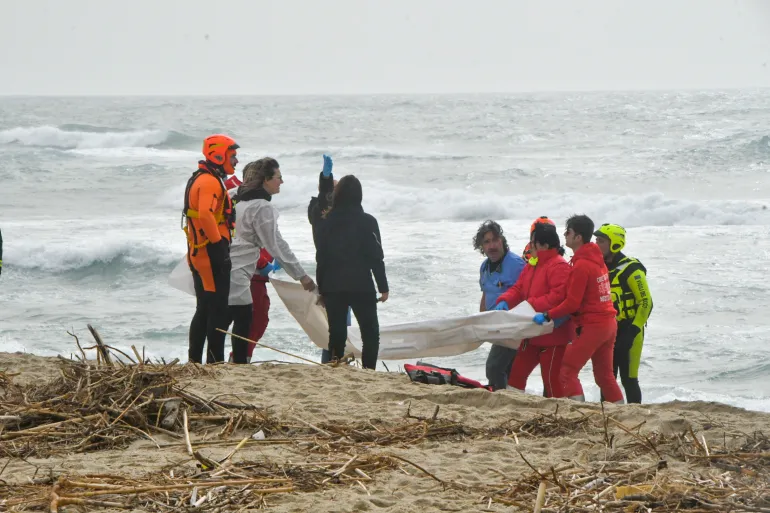Eight years after the image of three-year-old Alan Kurdi lying facedown on a beach in Turkey shocked the world, pictures of asylum seekers’ lifeless bodies washed up on the coast of Italy’s Calabria region in February once again stirred global outrage.
European Commission President Ursula von der Leyen responded to the tragic shipwreck just metres away from the coast of Steccato di Cutro by promising to “redouble our efforts”.
“Member states must step forward and find a solution. Now,” she said.
Yet as 2024 begins, activists and experts told Al Jazeera that 2023 has seen Europe reach for ever more drastic solutions to curb NGO search and rescue operations and outsource its border management to other nations.
The International Organization for Migration (IOM) estimated at least 2,571 people died this year trying to cross the Mediterranean – one of the deadliest years ever. Since 2014, the United Nations agency has counted at least 28,320 men, women and children who lost their lives trying to reach Europe.
“What is new is the popularity of the idea that you can externalise asylum processing,” said Camille Le Coz, associate director for Europe at the Migration Policy Institute. “That’s something we’re likely going to see more of moving forward despite shaky legal grounds.”
Externalising asylum
At least 264,371 asylum seekers entered Europe by boat and land in 2023, according to the Office of the UN High Commissioner for Refugees – a 66 percent increase compared with the previous year and the highest figure since 2016. Six of every 10 among them landed on Italian shores.







